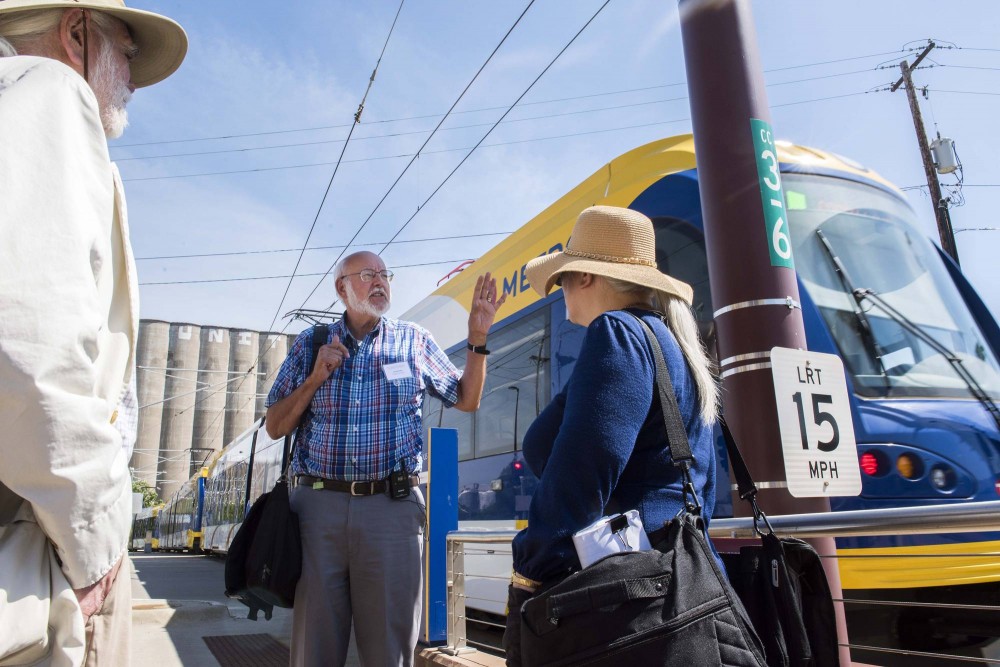Despite more than 250 businesses closing along the Green Line light rail corridor since 2009, overall employment in the areas has increased with the line’s completion.
As Metro Transit’s Green Line light rail celebrated its two-year anniversary, the Central Corridor Funders Collaborative — which includes 14 local and national organizations — released a final report Friday on the organization’s nine-year and nearly $12 million investment into areas paralleling the line’s track. The report, which shows the light rail’s impact on businesses, neighborhoods and other city infrastructure along the corridor, measured numerous aspects of the corridor’s economy, affordable housing and transit-centered green spaces.
While the report found that about 305 businesses along the Green Line with fewer than five employees have closed since 2009, there was a 10 percent increase in larger businesses with 100 to 250 employees.
Although the line impacted small and large businesses differently, job growth along the route has increased 3 percent, according to the report. In Minneapolis and St. Paul, there has been 7 percent job growth.
The report shows that jobs in the University area of the corridor grew from 29,714 in 2009 to nearly 31,000 in 2014. Forty-seven percent of the jobs in the corridor were at businesses with fewer than five employees, and 29 percent had roughly 5 to 20 positions. The majority of jobs in the University’s part of the corridor were in health care and social assistance or accommodations and food service, the report found.
The findings also show that Green Line ridership was about 37,400 per weekday in 2015 — close to Metro Transit’s 2030 estimated goal of about 41,000.
Although the line was touted as a success, some in attendance at the event raised concerns about the development’s contribution to long-term growth in the area.
“Economic development takes a long time, and communities will continue to evolve, so it’s never possible to declare victory,” said Patrick Troska, executive director of the Jay and Rose Phillips Family Foundation of Minnesota, a charity organization.
As planned, the CCFC is disbanding now that the Green Line is complete, said Ann Mulholland, vice president of Community Impact at the Saint Paul Foundation and the Minnesota Philanthropy Partners in a press release.
As part of its work related to the Green Line, the CCFC collaborated on multiple projects, like the development of 370 acres near the Prospect Park Station. Plans are in place for an approximately 300-room apartment building with a grocery store and off-street parking garage, according to collaborators at the event.
Between the planned apartment building and a University athletics practice field, the CCFC helped plan an effort to open up the land — which now holds a small community garden — for different events and projects, which may include a park.
“[The area will] be a great gathering space for the arts and everything else,” said Karl Reichert, collaborator and executive director of the Textile Center on University Avenue in Minneapolis.
Dick Gilyard, an architect and project collaborator, said the proposed development will focus on sustainability. He said he hopes to implement a storm water collection and treatment system in the area.
“It’s really an exciting area along the line because there’s both a lot of community support and ideas about what should be on this land,” said Mary Kay Bailey, the Collaborative’s director. “It’s also
exciting because it’s a relatively large piece of land in Minneapolis. You don’t get that many opportunities to get that much redevelopable space, especially a long a transit line.”








